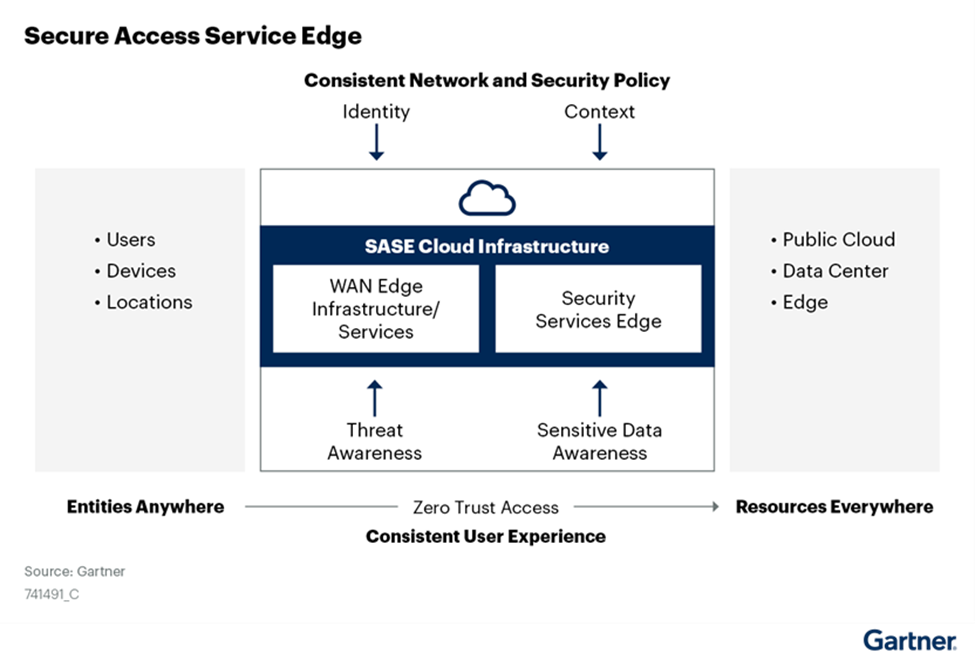Last time in our Let’s Get SASE Series, we posed the question: “Tired of spending time trying to track down and secure all the data your customers’ organizations create?” This time let’s spell out what SASE is and why its “light” version, secure service edge (SSE), might just make sense.
Breaking It Down
At a very high level, network access services combine with security services to form the secure access service edge (SASE), enabling users to work from any location using any device. In other words, you get the same hardened security while working away from the office as you would in the office.
A single, scalable SASE platform is ideal for remote and hybrid workforces who primarily access cloud-based apps and services. Plus, because it’s a cloud service, SASE can be easily scaled on demand and billed monthly based on usage, making it an ideal way to accommodate fast-changing business conditions.

Though few vendors offer all features in the same package, SASE marries five key technologies: integrated software-defined wide area network (SD-WAN), cloud-access security broker (CASB), secure web gateway, zero-trust network access (ZTNA) and firewall as a service. But few organizations will want to deploy all five technologies at the same time.
Therefore, Gartner advocates a SASE “light” alternative to either integrate with an existing SD-WAN solution or to enable a phased implementation before eventually migrating to the full SASE stack and consolidating to one integrated vendor (or two with tight integration). This light version of SASE—secure service edge (SSE)—allows remote workers to securely connect to their organization’s services, no matter where those apps and services reside.
SSE removes the integrated WAN and firewall-as-a-service, enabling you to implement these capabilities in your customer’s environment now, while planning for a longer-term, full-stack SASE implementation in the future. SSE includes:
- CASBs – Connects end-users to enterprise software-as-a-service (SaaS) apps, such as Microsoft Office 365, Cisco Webex, and Salesforce.
- Secure web gateways – Enables end-users to securely connect to the internet to access research or cloud apps that aren’t officially sanctioned by IT (while still allowing IT to control and secure them with a single policy).
- ZTNA – Connects end-users to private enterprise apps in on-premise data centers or the cloud.
Of course, if your customer already has SD-WAN, it enables you to fully integrate SSE functionality for a full-stack implementation. Add a single management interface and customers can easily scale and manage security services by setting and enforcing global security policies.
Gartner predicts that your customers will readily gravitate to toward SSE solutions on their way to full-stack SASE. In fact, by 2025, 80% of organizations will purchase a consolidated SSE solution rather than standalone CASB, secure web gateway, and ZTNA products—up from 15% in 2021.
Come back next month as we break down this offering even more in our Let’s Get SASE Series, exclusively on LevelUp!
Can’t wait that long? Contact the CyberSolv team at SecureNetworking@tdsynnex.com to learn more or get started with cutting-edge SASE solution offerings today!
“Gartner: SSE is SASE minus the SD-WAN,” NetworkWorld.com, March 7, 2022.